Blog
Welcome to Heaven And Homes
We make your home as unique and beautiful as the people living in it.

Avoid costly mistakes. Get guidance from a design expert.
Living Room Furniture Guide
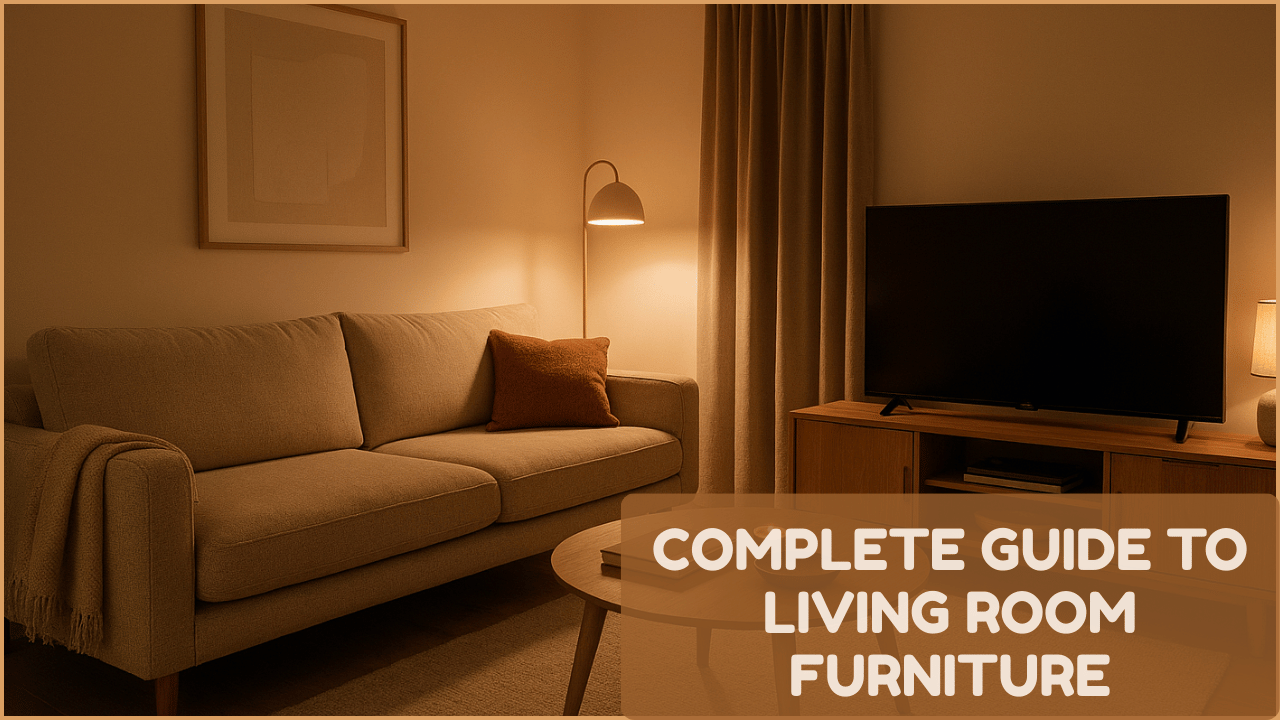
Table of Contents
Introduction to Living Room Furniture
The living room is often the heart of a home, a versatile space where families gather, entertain guests, and unwind after a long day. The furniture chosen for this area plays a pivotal role in defining its comfort, functionality, and aesthetic appeal. In UK homes, from cozy urban flats to spacious suburban houses, living room furniture needs to be both stylish and adaptable to various activities.
This comprehensive guide explores the essential components of living room furniture, offering insights into how to select pieces that create a harmonious and inviting environment. We will delve into everything from seating arrangements and storage solutions to accent pieces and lighting, ensuring your living room is a true reflection of your lifestyle and a welcoming space for all.
Essential Living Room Furniture Pieces
Creating a well-appointed living room involves a thoughtful selection of furniture that balances comfort, utility, and design. Each piece contributes to the overall ambiance and functionality of the space.
- Sofas and Sectionals: The centerpiece of most living rooms, sofas provide primary seating and define the room’s layout. Options range from traditional three-seater sofas and compact two-seaters to versatile sectionals that can be configured to fit various spaces. Considerations include size, material (fabric, leather, velvet), and style to match your aesthetic.
- Armchairs and Accent Chairs: These provide additional seating and can add a pop of color or a unique design element to the room. They are perfect for creating cozy reading nooks or complementing the main sofa arrangement.
- Coffee Tables: A functional and aesthetic focal point, coffee tables provide a surface for drinks, books, and decorative items. They come in various shapes, sizes, and materials, from classic wood to modern glass or metal.
- Side Tables/End Tables: Placed next to sofas or armchairs, these offer convenient surfaces for lamps, remote controls, and personal items. They can also provide additional storage with drawers or shelves.
- TV Units/Media Consoles: Designed to house televisions and media equipment, these units often include storage for media accessories, books, and decorative items. They help keep the living room tidy and organized.
- Storage Solutions (Bookcases, Shelving Units, Cabinets): Essential for managing clutter and displaying personal items, books, and decor. Options range from open shelving for a light, airy feel to closed cabinets for discreet storage.
- Ottomans and Poufs: Versatile pieces that can serve as footrests, extra seating, or even makeshift coffee tables. They add comfort and flexibility to the living room layout.
- Console Tables: Often placed behind a sofa or against a wall, these narrow tables are ideal for displaying decorative items, lamps, or for use as a small workspace.
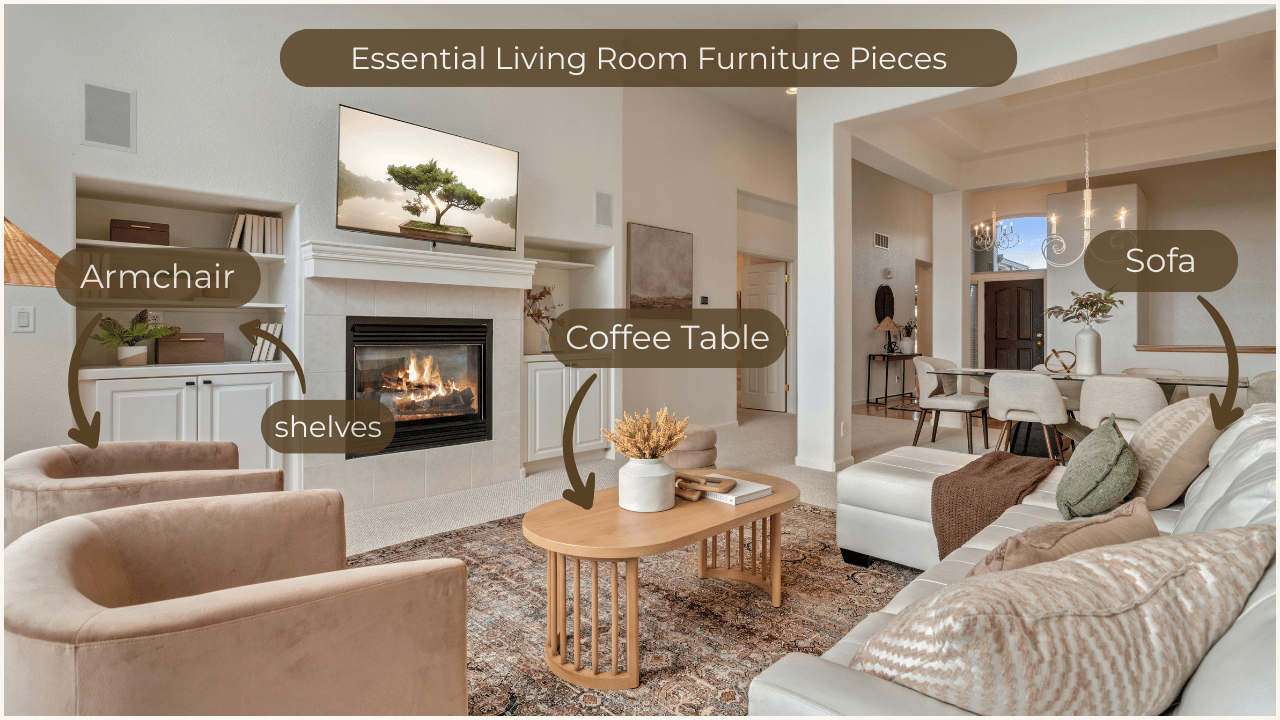
Thoughtful selection and arrangement of these pieces will create a living room that is both practical for daily living and inviting for relaxation and entertaining.
Choosing the Right Sofa: Comfort, Style, and Durability
The sofa is arguably the most important piece of furniture in the living room, serving as both a comfort hub and a style statement. Selecting the right one involves balancing personal comfort preferences with aesthetic appeal and long-term durability.
Sofa Types
- Standard Sofa: Typically seats 2-4 people, available in various lengths. A versatile choice for most living rooms.
- Sectional Sofa: Composed of multiple independent pieces that can be arranged in various configurations (L-shape, U-shape). Ideal for larger families or entertaining, and for maximizing seating in corners.
- Sofa Bed: A multi-functional option that converts into a bed, perfect for accommodating overnight guests in smaller spaces or apartments.
- Loveseat: A compact sofa designed to seat two people, suitable for smaller living rooms or as an additional seating option.
- Chesterfield Sofa: A classic, elegant design characterized by rolled arms, deep button tufting, and often leather upholstery. Adds a touch of traditional luxury.
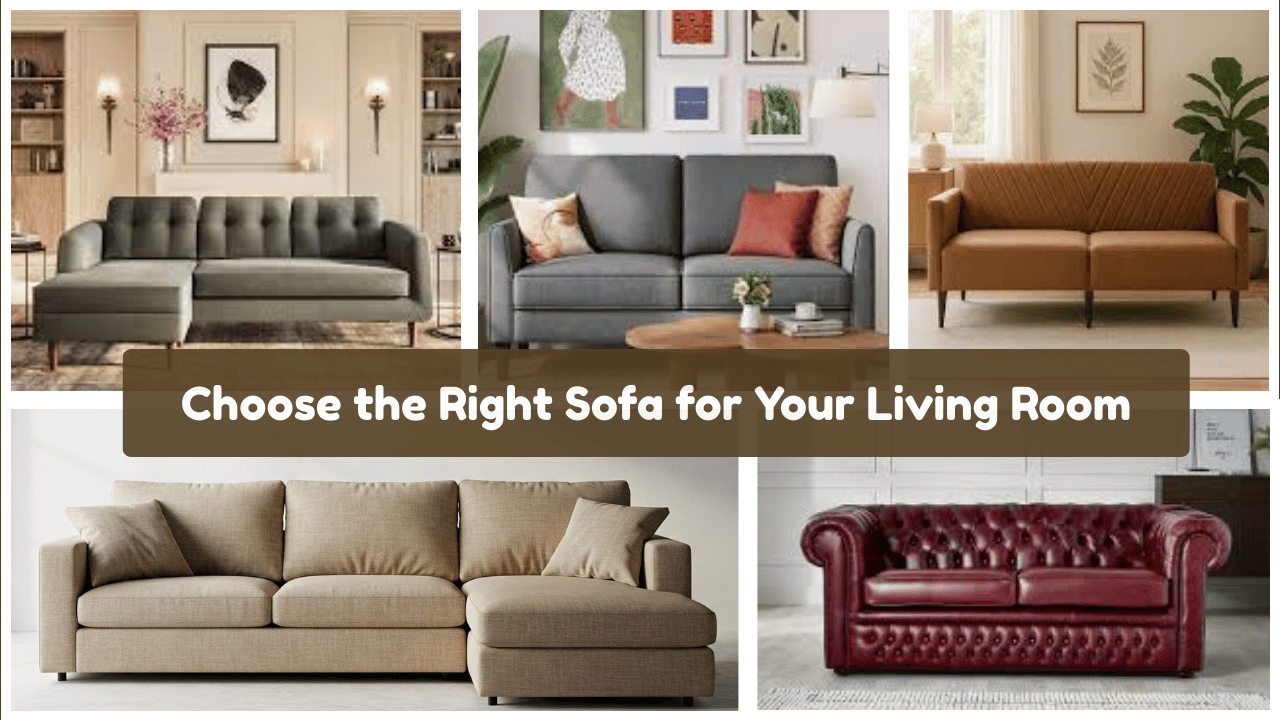
Material Considerations
- Fabric: Offers a wide range of colors, patterns, and textures. Options include:
- Velvet: Luxurious, soft, and adds a rich texture. Can be durable if well-maintained.
- Linen: Natural, breathable, and offers a relaxed, casual look. Prone to wrinkling.
- Cotton: Durable, breathable, and easy to clean. A versatile and popular choice.
- Wool: Durable, naturally flame-resistant, and provides warmth. Can be more expensive.
- Leather: Durable, easy to clean, and develops a unique patina over time. Offers a sophisticated and timeless look. Can be more expensive initially.
Comfort and Construction
- Frame: Look for sturdy frames made from kiln-dried hardwood (oak, maple) or engineered wood. Avoid particleboard or softwoods.
- Cushions: Consider the filling for comfort and support. Options include foam (firm, supportive), feather/down (soft, plush), or a combination.
- Suspension: Good suspension (e.g., eight-way hand-tied springs, sinuous springs) ensures durability and comfort.
- Depth and Height: Consider your body type and how you prefer to sit. Deeper sofas are good for lounging, while shallower ones are better for upright sitting.
Testing a sofa in person is always recommended to assess comfort and ensure it meets your specific needs. Consider your lifestyle, family size, and how the sofa will be used daily to make the best choice.
Living Room Layout Ideas for UK Homes
A well-planned living room layout is essential for creating a functional, comfortable, and aesthetically pleasing space. Given the diverse sizes and shapes of UK living rooms, adaptable layouts are key.
- Focal Point First: Identify the room’s natural focal point (e.g., fireplace, TV, large window) and arrange furniture around it. If there isn’t a natural one, create one with a large piece of art or a statement rug.
- Conversation Area: Arrange seating to facilitate conversation. Sofas and chairs should face each other or be angled towards a central point, allowing for easy interaction without shouting.
- Traffic Flow: Ensure clear pathways throughout the room. Avoid placing large furniture pieces in high-traffic areas. Leave enough space (at least 60-90 cm) between furniture for comfortable movement.
- Small Living Room Solutions: In compact spaces, opt for smaller-scale furniture, such as a loveseat or a compact sectional. Use multi-functional pieces like ottomans with storage. Consider wall-mounted shelving or floating units to free up floor space. Mirrors can also create an illusion of depth and light.
- Open-Plan Living: In open-plan spaces, use furniture to define different zones (e.g., living, dining, kitchen) without creating physical barriers. A sectional sofa can delineate the living area, or a console table behind a sofa can mark the boundary.
- Symmetry vs. Asymmetry: Symmetrical layouts create a formal, balanced feel, often with matching pieces on either side of a focal point. Asymmetrical layouts are more dynamic and casual, using different pieces that balance each other visually.
- Lighting Integration: Plan for various lighting sources: ambient (general room light), task (for reading), and accent (to highlight features). Ensure lamps are placed conveniently near seating areas.
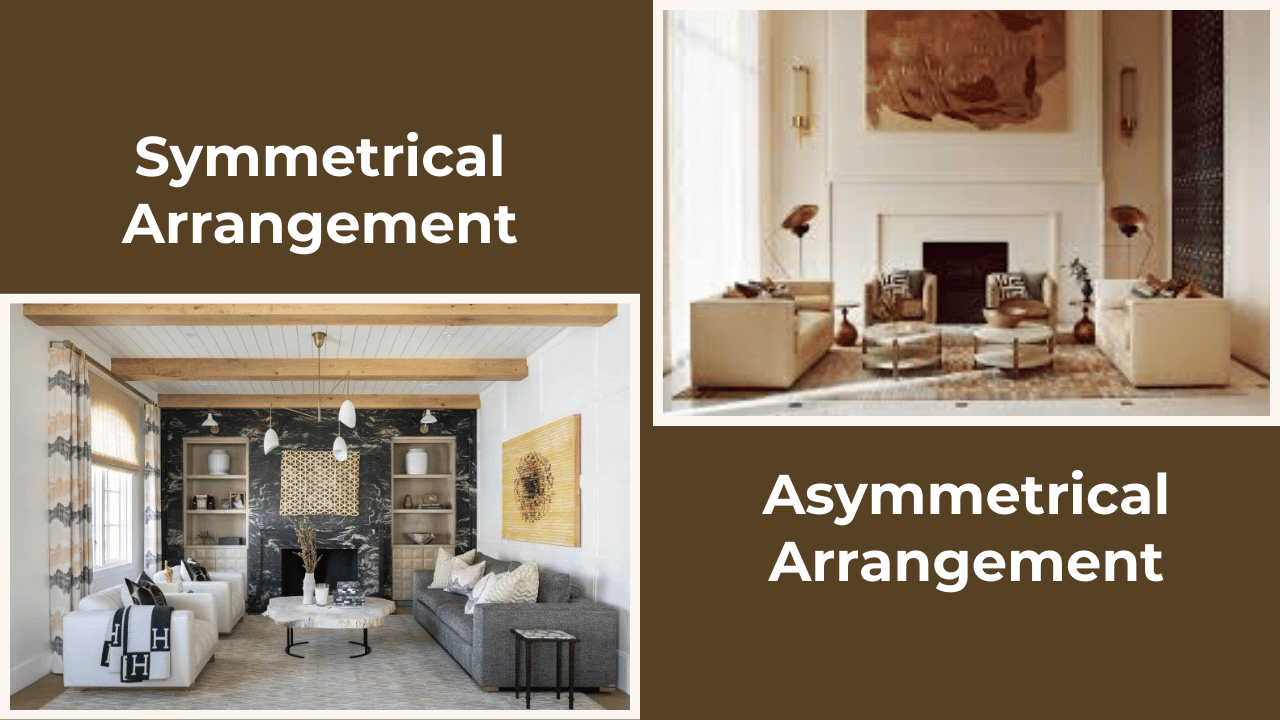
Before moving furniture, measure your room and draw a floor plan to experiment with different arrangements. This helps visualize the space and ensures all pieces fit comfortably, creating a harmonious and functional living environment.
Living Room Furniture Styles and Aesthetics
The style of your living room furniture significantly influences the overall character and mood of the space. From contemporary chic to rustic charm, there’s a wide array of aesthetics to choose from, allowing you to curate a living room that truly reflects your personal taste.
- Modern/Contemporary: Defined by clean lines, minimalist forms, and often a neutral color palette with subtle accents. Materials like glass, metal, and sleek wood are common. Focuses on functionality, simplicity, and an uncluttered look.
- Minimalist: An evolution of modern design, emphasizing extreme simplicity, essential pieces, and a monochromatic scheme. Every item serves a purpose, and clutter is strictly avoided, creating a serene and spacious environment.
- Scandinavian: Characterized by light wood tones, white walls, natural textures, and functional designs. It aims to create a bright, airy, and cozy space (hygge) with a focus on comfort and simplicity.
- Industrial: Raw and edgy, featuring exposed metal, reclaimed wood, and utilitarian designs. Often incorporates dark colors, concrete, and distressed finishes, creating a loft-like, urban feel.
- Traditional/Classic: Rich wood finishes, ornate details, and upholstered pieces with intricate patterns or tufting. Evokes a sense of timeless elegance and luxury, often with a grander scale.
- Bohemian: Eclectic and free-spirited, combining various textures, patterns, and global influences. Often features natural materials, vibrant colors, and a relaxed, lived-in feel.
- Mid-Century Modern: Popularized in the mid-20th century, this style features organic shapes, tapered legs, and a blend of natural and man-made materials. It’s known for its timeless appeal and functional beauty.
- Coastal/Hamptons: Light, airy, and relaxed, inspired by beach house aesthetics. Features natural textures, light colors (whites, blues, greens), and comfortable, oversized seating.

When selecting a style, consider the existing architecture of your home, your personal preferences, and the mood you wish to evoke. Consistency in style across your furniture pieces will result in a cohesive and harmonious living room design.
Sustainable and Eco-Friendly Living Room Furniture
As environmental consciousness grows, so does the demand for sustainable and eco-friendly living room furniture. Choosing such pieces contributes to a healthier planet and often, a healthier home environment.
Sustainably Sourced Materials: Look for furniture made from:
- FSC-certified wood: Ensures wood comes from responsibly managed forests.
- Recycled or reclaimed wood: Gives new life to old materials, reducing waste.
- Bamboo: A fast-growing, renewable resource, known for its durability.
- Organic fabrics: Cotton, linen, and hemp grown without harmful pesticides or chemicals for upholstery.
- Recycled metal or plastic: Reduces the demand for virgin resources.
- Non-Toxic Finishes: Opt for furniture finished with low-VOC (Volatile Organic Compound) paints, stains, and adhesives to improve indoor air quality.
- Durable Construction: Well-made furniture lasts longer, reducing the need for frequent replacements and minimizing waste. Invest in quality pieces that are built to withstand time.
- Ethical Manufacturing: Support brands that prioritize fair labor practices, safe working conditions, and transparent supply chains.
- Circular Economy Principles: Some manufacturers design furniture for disassembly, making it easier to repair, reuse, or recycle components at the end of its life.
- Local Sourcing: Buying from local manufacturers reduces transportation emissions and supports the local econom
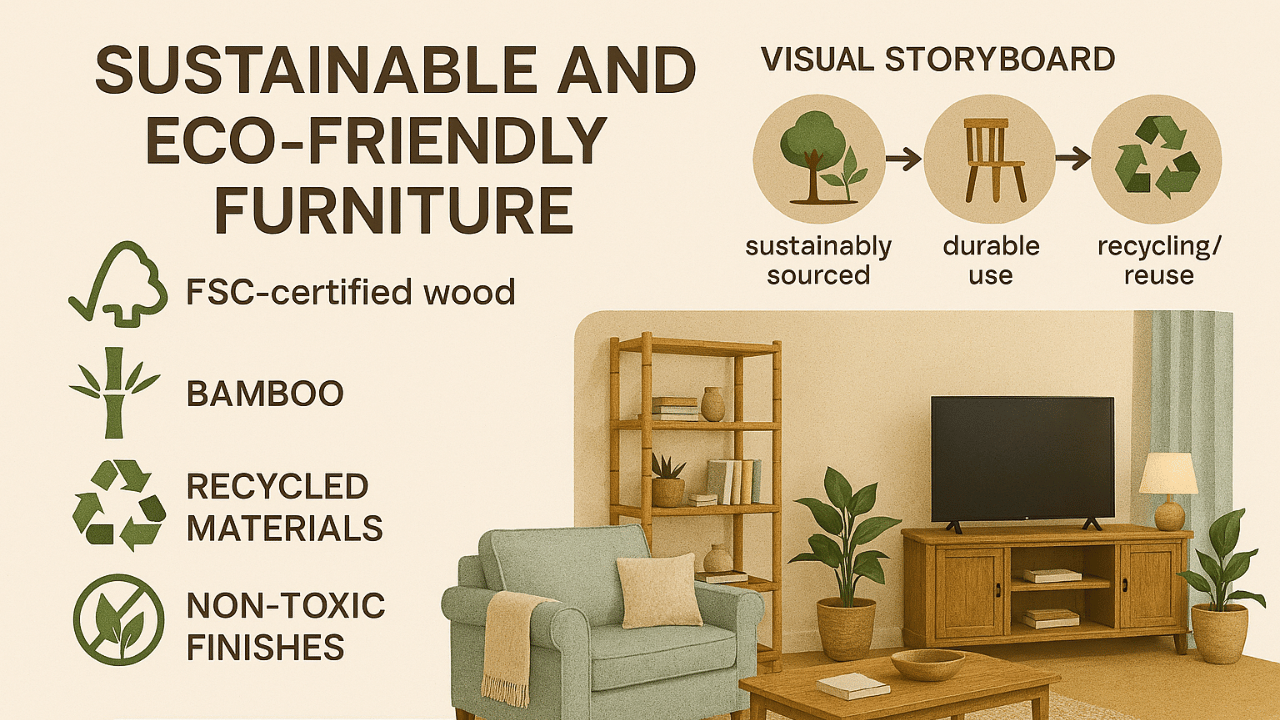
By making conscious choices about your living room furniture, you can create a beautiful and comfortable space that aligns with your values and contributes positively to the environment.
Living Room Furniture Care and Maintenance
Proper care and maintenance can significantly extend the life and beauty of your living room furniture. Different materials require specific attention to keep them looking their best.
Upholstered Furniture: Vacuum regularly using an upholstery attachment to remove dust and debris. For spills, blot immediately with a clean, dry cloth. Refer to the manufacturer’s cleaning codes (W for water-based, S for solvent-based, WS for both, X for vacuum only) for specific cleaning instructions. Professional cleaning may be required periodically.
- Wood Furniture: Dust regularly with a soft, dry cloth. For deeper cleaning, use a wood-specific cleaner. Avoid direct sunlight and extreme temperature changes, which can cause warping or fading. Use coasters and placemats to protect surfaces from spills and scratches.
- Metal Furniture: Wipe with a soft, damp cloth and mild soap. Dry thoroughly to prevent rust. Avoid abrasive cleaners that can scratch the finish. For outdoor metal furniture, consider protective covers.
- Glass Surfaces: Clean with a glass cleaner and a microfiber cloth to avoid streaks. Be careful with heavy objects to prevent cracks or chips.
- Leather Furniture: Dust regularly with a sofcally to keep the material supple and prevent cracking. Avoid direct sunlight and heat sources.
General Tips: Avoid dragging furniture across floors; lift and move it. Tighten screws and bolts periodically to ensure stability. Protect furniture from pets and sharp objects. Address spills immediately to prevent stains.
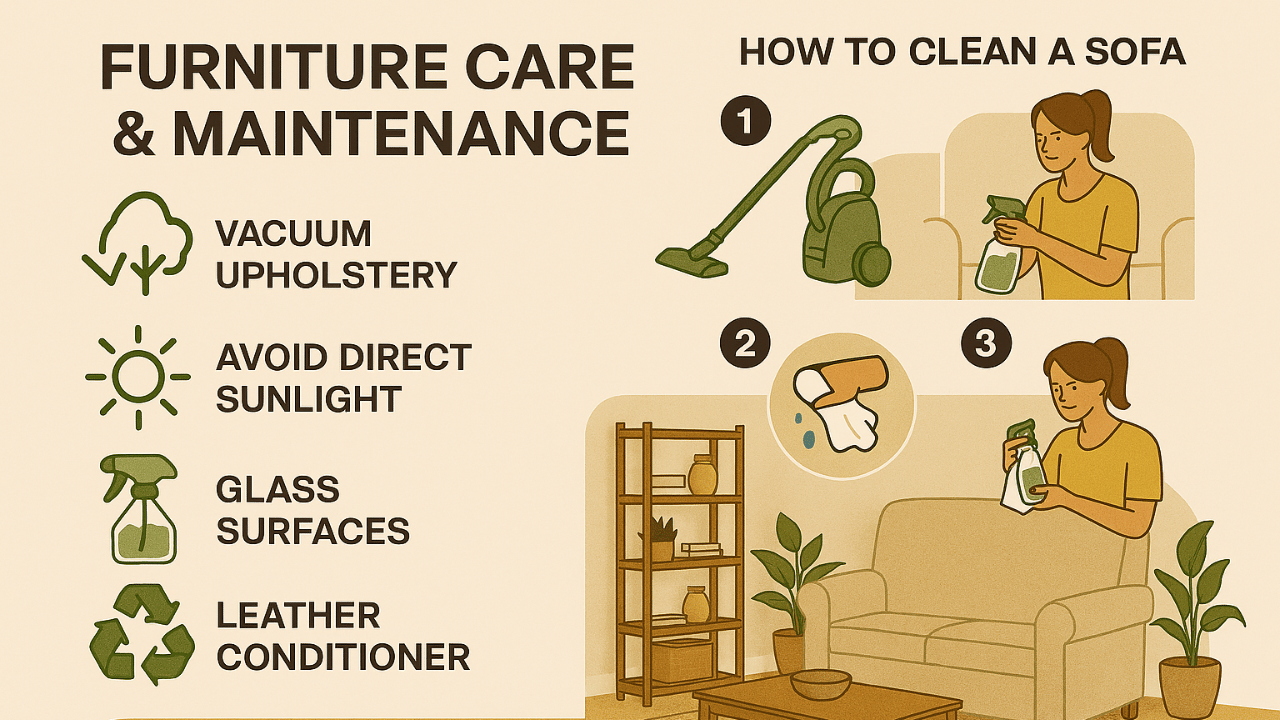
Regular care not only preserves the appearance of your furniture but also ensures its longevity, making your investment worthwhile.
Conclusion
The living room is a dynamic space that serves multiple purposes, from family gatherings to quiet relaxation. By carefully selecting furniture that combines comfort, style, and functionality, you can create an inviting and harmonious environment that reflects your personal taste and enhances your daily life.
From choosing the perfect sofa to implementing smart storage solutions, every decision contributes to the overall success of the space. Embracing sustainable choices and committing to regular maintenance will ensure your living room furniture remains beautiful and functional for years to come.
Heaven & Homes offers a curated selection of high-quality living room furniture designed to meet the diverse needs and tastes of UK homeowners, helping you transform your communal space into a haven of comfort and style. Explore our collection to find pieces that resonate with your vision for the perfect living room.
Frequently Asked Questions
The must-have pieces include a sofa or sectional, armchairs, a coffee table, side tables, a TV unit or media console, storage solutions, and accent pieces like ottomans or console tables.
Consider your room size, lifestyle, and seating needs. Look at sofa types (standard, sectional, sofa bed, loveseat, Chesterfield), material (fabric vs. leather), and construction quality for long-term comfort and durability.
For compact spaces, choose a loveseat or small sectional, wall-mounted shelves, and multi-functional furniture like storage ottomans. Mirrors and light colours also help make the room feel bigger.
Scandinavian and modern styles are trending for their simplicity and functionality, while traditional and industrial designs remain timeless choices. It depends on your taste and home’s architecture.
Opt for sustainably sourced wood, recycled or reclaimed materials, low-VOC finishes, and durable designs. Supporting local UK furniture makers also reduces carbon impact.
Vacuum upholstery regularly, dust wood with a soft cloth, clean glass with a streak-free cleaner, and condition leather to prevent cracking. Always follow the manufacturer’s care instructions.
A sectional is modular and can be arranged in L- or U-shapes, ideal for larger spaces or families. A standard sofa is more compact and versatile, fitting into most living room layouts.
Heaven & Homes offers a curated selection of stylish, durable, and affordable living room furniture designed for UK homes. Explore our collection online.

One thought on “Living Room Furniture Guide”
Great web site. A lot of helpful information here. I’m sending it to a few buddies ans additionally sharing in delicious. And certainly, thanks in your effort!